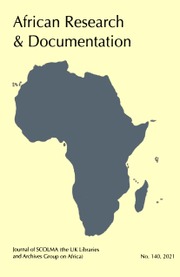No CrossRef data available.
Article contents
The Dynamics of Literary Response: Students as Readers of African Women's Writing
Published online by Cambridge University Press: 25 April 2022
Extract
At the 1998 Book Day Symposium organised by the British Council in Lagos, almost everyone who spoke lamented the near absence of a reading culture in Nigeria. As one of the guest speakers, I tried to highlight and discuss some of the factors that militate against the development of a reading culture in our society. Naturally I also suggested ways by which this anomaly could be remedied. Few or a negligible proportion of people read for pleasure in Nigeria. And among these, students at the various levels of formal education - primary, secondary and tertiary - constitute the greater part of the reading public. But unfortunately, these students read only to write and pass their examinations, which implies a wilful circumscription of books, especially literary texts. Even at the tertiary level, it is usually an uphill task persuading the students, even of literary studies, to go beyond the required or recommended texts in their reading.
- Type
- Reading and Readership in West Africa
- Information
- Copyright
- Copyright © International African Institute 2000


